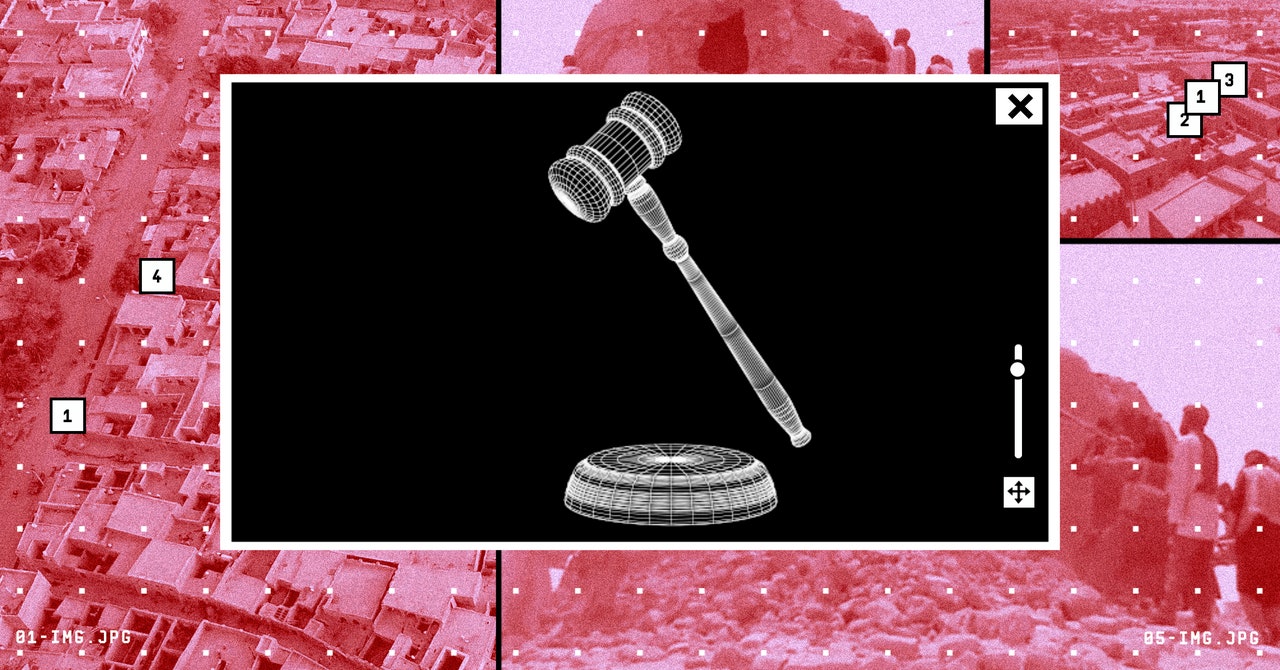
The platform allows users to virtually walk through the city of Timbuktu, as well as see it from above. Nested within the virtual re-creation of the city are pieces of video, photo, and audio evidence, showing where and when an event allegedly occurred. For instance, users can explore down a street and encounter an item labeled to a corresponding piece of evidence, click on it, and see a video of a particular moment that shows who was allegedly present and what occurred.
SITU’s platform combines drone footage, satellite imagery, laser scans, and other forms of visual evidence that, Samuels says, allows the judges to see the evidence over time and space in a way that would not otherwise be possible. This is particularly important in cases of crimes against humanity, which require the crimes to be systematic and widespread as opposed to a single, isolated incident. And he says there’s more value to the platform than just helping the judges organize visual evidence that supports witness testimony.
“In the case of Timbuktu, the security situation in Mali has sort of gotten worse and worse. And the judges definitely were not able to go there in person,” Samuels says. For instance, the platform includes the interior of a former bank that functioned as the headquarters of Islamic Police, and another site where someone was flogged.
“It can also become a tool for interviewing witnesses about what they experienced,” Koenig says of SITU’s platform. “If you think about some of the language barriers and cultural barriers, not having a touchpoint like that, have them walk you through what happened to them can be almost guesswork at times of trying to piece together their story, particularly when there’s a lot of trauma involved and memories are fragmented or recollections are fragmented.”
Sarah Zarmsky, assistant lecturer at Essex Law School, says, however, that often the defense teams for the accused lack the same resources offered to the prosecution.
“This platform was designed for the prosecution,” she says. “So, while SITU Research does great work, the defense also isn’t coming in with that same expertise. And so there are a lot of fair-trial implications there.”
In an article published in 2023, ICC chief prosecutor Karim Khan noted that “the defense sought full access to the virtual platform, and required (and were provided) training and guidance on its use, so that they could also deploy it as needed.”
In the case of the ICC, where the court allows almost all evidence to be submitted and then decides afterward how much weight to assign each piece of evidence, that can mean an overburdened defense team may not have the time to sift through each piece of evidence. For something novel like the platform created by SITU, Zarmsky says, it’s unclear how much weight the court might put on it when it comes down to making a ruling.
But Khan asserted that the “Trial Chamber’s acceptance of the platform shows that the law and procedure of the ICC is ready to accommodate forward-thinking approaches to the presentation of evidence.”









